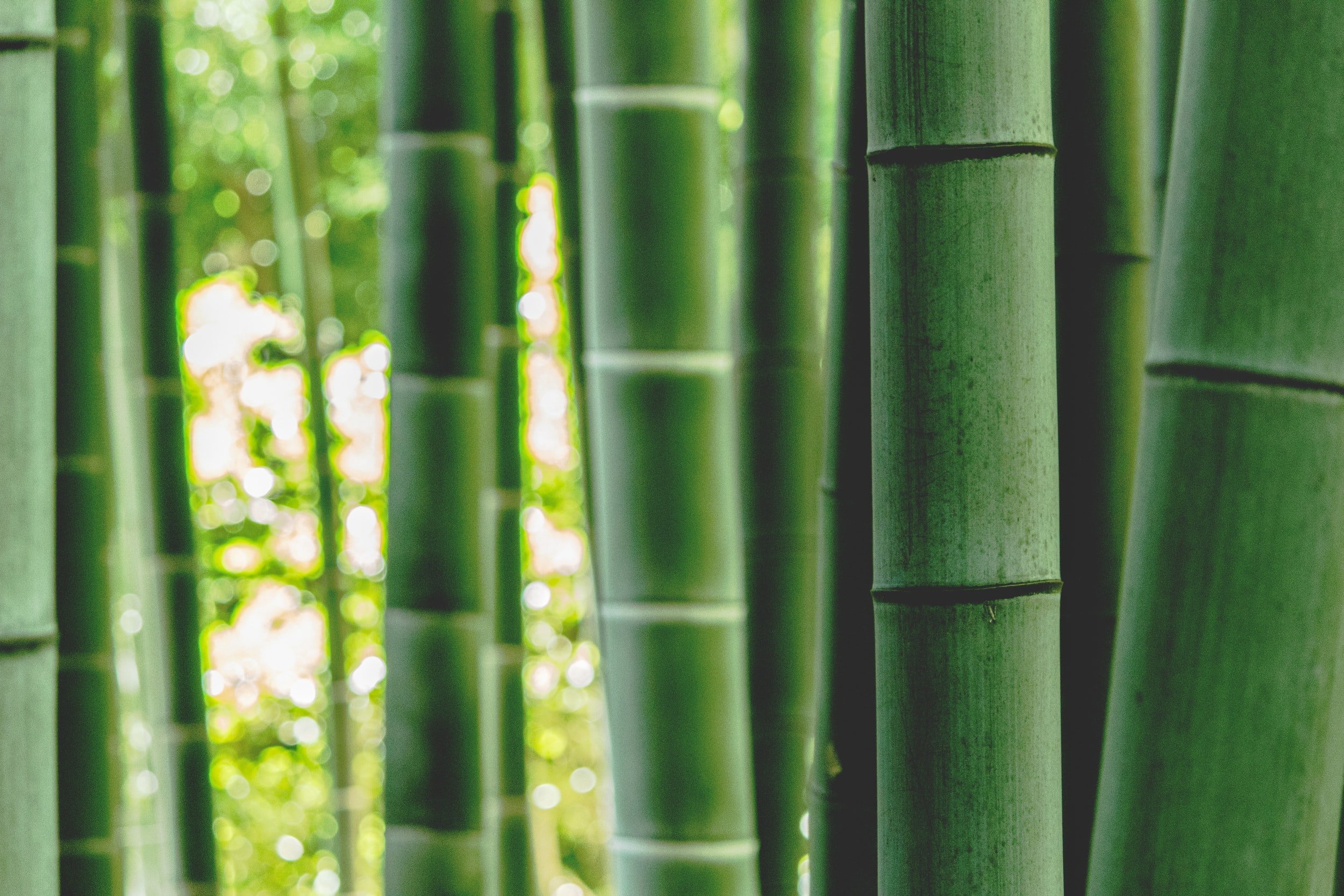What is bamboo?
Bamboo is a natural bast fiber extracted from the pulp of bamboo plants. The bamboo plant is well known for its environmental friendliness. Bamboo is rapidly renewable and grows very quickly without relying on harsh chemicals or large amounts of water to grow abundantly. It can be processed into bamboo linen fiber or manufactured into a semi-synthetic fiber such as bamboo rayon/viscose or Lyocell.
The bamboo plant has established its place on the list of top sustainable textiles sources. However, the sustainable potential of bamboo in the textile industry generally ends at the plant. The environmentally friendly properties of the bamboo plant are eclipsed by the harmful process of manufacturing bamboo rayon. As a result of the intense labor it requires, bamboo is not often used to make bamboo linen. Instead, it’s commonly used to make bamboo rayon, a regenerated fiber that is cheaper to make, but adversely impactful on the environment.
What is a regenerated fiber?
Regenerated fibers are derived from natural sources and chemically transformed into semi-synthetic fibers. Rayon, for example, is a regenerated fiber made from the cellulose fiber of wood pulp. Bamboo is one of the common sources of cellulose fiber used to create rayon textiles.
What is bamboo rayon?
Bamboo rayon is a regenerated fiber made from the bamboo plant. In order to transform into semi-synthetic fiber, cellulose fiber from the bamboo plant must undergo several chemical processes. The result is a rayon made from bamboo, a textile whose manufacturing process has a significant impact on the environment. Rayon fabrics are known to be durable, lustrous, and affordable, but creating them is an energy intensive process, involving chemicals that can result in water and air pollution.
What is the difference between viscose and Lyocell?
Bamboo viscose is a bamboo rayon traditionally made from the cellulose fibers of bamboo plants. The viscose process involves soaking cellulose fibers in sodium hydroxide and carbon disulfide to make pulp. The pulp is then tensioned through spinnerets and then solidified using sulfuric acid. Bamboo Lyocell is considered a more sustainable alternative to bamboo viscose. The Lyocell process also includes chemical processing but modern Lyocell manufacturing requires less chemicals and energy than synthesizing bamboo viscose.
When sourcing a bamboo textile, look for:
Bamboo linen textiles are more natural and do not require the chemicals, water, and energy that bamboo rayon does.
Organic bamboo linen fabrics certified by The Global Organic Textile Standard (GOTS). Search the GOTS Public Database to find certified vendors.
Look for Fair Trade certified suppliers or suppliers who are practicing transparency to ensure that the workers who make your textiles are protected.
Bamboo linen fabrics that are made from fiber extracted using the Dew Retting method. Dew Retting is less chemical and more environmentally friendly. Read more about Dew Retting here.
If you are committed to using bamboo rayon, consider bamboo Lyocell, a version of bamboo rayon that is more environmentally friendly than bamboo viscose.
Additional resources for you to explore:
Quick Guide To Different Types of Textile Fibres
What is the difference between viscose and Lyocell?


